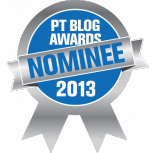 The physical therapy profession has been bedazzled by plenty of bright and shiny objects over the years. These shiny new objects have included degree escalation, alphabet soup certifications, and continuing education ranging from dry needling to visceral manipulation amongst many others.
The physical therapy profession has been bedazzled by plenty of bright and shiny objects over the years. These shiny new objects have included degree escalation, alphabet soup certifications, and continuing education ranging from dry needling to visceral manipulation amongst many others.
All that has done is pull the profession further and further away from our unique value proposition. None of this has aided in defining the role of the profession for prospective consumers.
But, we can simplify all this with some simple branding.
You see, physical therapy is, first and foremost, a movement profession. Movement and function define what we do, long before degrees and certifications.
Over time, the profession slowly became enamored by degree escalation, much like many other health care professions. In 1988, the transition to the MPT began. In 2000, the transition to the DPT began such that in the United States, physical therapy is now considered a "doctoring profession". It is almost to the point where "doctor" precedes "physical therapy" when discussing the profession and its future.
In the same breathe, physical therapists started to integrate all sorts of new and diverse treatment interventions into the physical therapy profession. You can now find clinics that specialize in things like dry needling, visceral manipulation, craniosacral therapy, active release therapy, and many other "tools". Physical therapists continue to want to embrace and take ownership of all these new "tools". "More tools in the toolbox", as they are known to say in educational programs across the nation.
In the meantime, all of this has caused our focus to stray significantly. There is a strong case of brand dilution. No wonder consumers are confused.
Our profession has ignored that which makes us unique in the spectrum of health and health care. We are a movement profession. We are the experts in exercise prescription, in restoring function, and in enhancing performance. No other profession – including physicians, chiropractors, massage therapists, you name it – know movement and function like we do. None of them have the training, nor the specific clinical education, that we have had in ANY entry-level physical therapy degree program. That is what can provide us with strength in legislative debates. That is what gives us presence in consumer branding. That is our unique value proposition to patients and to the world of health.
A movement profession. That theme should be foremost in all of our marketing efforts. Not only does it clarify our role with patients, but it provides solidarity and unity amongst members of the profession. This is our brand. This is who we are.
We are not a doctoring, needling, manipulating, ultrasounding, massaging profession. We are a movement profession.
We could have spent the past two decades positioning ourselves in the market place with this unique value proposition. We could have created programs that spend more time reflecting on cellular physiology and its ramifications on movement and adaptation, and less time spent of putting more tools in our toolbox without even building a good toolbox. But we got sidetracked by all of those shiny new objects.
Health care is still awaiting a group who's sole focus is on the problems of movement that are costing our health care system dearly. Let's put aside all the other "stuff" (and it is just "stuff"), come together as one, and get on with it. Let's take rightful ownership of it, with all of our combined energies, before it is too late. Let's solve the problems of health care as only we know how. It will require a movement - with movement.
No better time than the present.
Photo credits: waferboard
 "Running Injuries: Etiology And Recovery- Based Treatment" (co-author Bridget Clark, PT) appears in the third edition and fourth editions of "Clinical Orthopaedic Rehabilitation: A Team Approach" by Charles Giangarra, MD and Robert C. Manske, PT.
"Running Injuries: Etiology And Recovery- Based Treatment" (co-author Bridget Clark, PT) appears in the third edition and fourth editions of "Clinical Orthopaedic Rehabilitation: A Team Approach" by Charles Giangarra, MD and Robert C. Manske, PT.
 Allan Besselink, PT, DPT, Ph.D., Dip.MDT has a unique voice in the world of sports, education, and health care. Read more about Allan here.
Allan Besselink, PT, DPT, Ph.D., Dip.MDT has a unique voice in the world of sports, education, and health care. Read more about Allan here.
 Top 5 finalist in three categories: "Best Overall Blog", "Best PT Blog" and "Best Advocacy Blog".
Top 5 finalist in three categories: "Best Overall Blog", "Best PT Blog" and "Best Advocacy Blog".